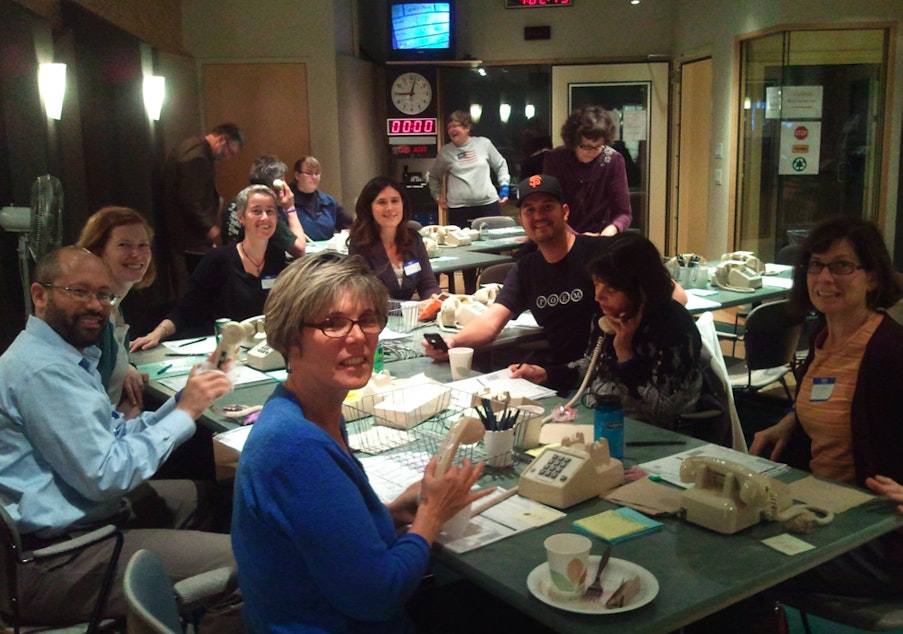The Rise Of KUOW And Public Radio In Seattle

KUOW recently began its seventh decade on the air in Seattle. All this week we’ve been looking back at the history of radio in the Puget Sound Region. Today, Feliks Banel explores how local public radio has evolved over that last 30 years as a result of changes in commercial radio and the rise of national programming.
In the early 1980s, Seattle was growing and changing. Boeing was still the region’s major employer, but Microsoft and the tech boom were on the horizon. KUOW had been on the air for 30 years and the radio station was evolving, too. Paid staff had replaced student broadcasters and the sound of the station began to change.
Other listener-supported stations around the dial were changing as well. Student DJs next door in the University of Washington's communications building were playing punk and new wave on KCMU. At Pacific Lutheran University, KPLU had dropped classical music in favor of jazz.
It was one day in late spring 1980 that early-morning KUOW listeners awoke to something new: Bob Edwards and the local debut of National Public Radio’s Morning Edition. The new show was a morning version of All Things Considered, which KUOW had carried since it debuted in 1971. The popularity of the two shows played a big part in KUOW’s growth in the 1980s.
The station’s audience, which had been miniscule in the 1950s and 1960s, was expanding. Arbitron ratings show a leap from 36,000 listeners a week in 1978 to 70,000 in 1980. And listener support through pledge drives was growing, too.
Then in 1983 NPR had a major fiscal crisis and almost went bankrupt. KUOW joined with nearly a hundred other stations around the country to mount a special pledge drive and, with help from listeners, saved NPR.
But it wasn’t just public radio that was changing in the 1980s. Popular national talk radio shows, such as The Larry King Show, and changes in FCC broadcasting rules meant less local news and information on many commercial radio stations.
These changes created a niche for local, listener-supported stations willing to focus on news and information and many, including KUOW, made the leap.
When KUOW broadcast its final symphony in 1995, many local classical music fans were angered by the shift. But over time, ratings grew.
As an NPR affiliate, KUOW was there in the 1990s to interpret for the rest of the country as Seattle momentarily became the center of the pop culture universe. NPR listeners nationwide heard KUOW’s Marcie Sillman reporting on the death of musician Kurt Cobain.
And when public radio really hit its stride as a dominant cultural force in the 1990s, KUOW rode the wave. Shows like Car Talk and Prairie Home Companion became part of the zeitgeist, with profiles by 60 Minutes and People magazine. Personalities like Nina Totenberg, Ira Glass, and “Click and Clack” became media celebrities.
Along with national programs, KUOW offered its own slate of shows, including Weekday and The Conversation.
In 2000, after a successful capital campaign, KUOW moved from the communications building on the UW campus to new headquarters on University Way. It was an era of sweeping change for the radio industry. The technology began to shift radically with the introduction of online audio, podcasts and, eventually, smartphone apps.
But it wasn’t just the technology. The economics shifted, too. The sale of many Seattle commercial stations to national chains all but wiped out local ownership.
But public radio is a little different. Stations like KEXP, KPLU and KUOW are non-commercial, not-for-profit organizations. So while formats have shifted and the devices that listeners use to tune in have changed over the decades, local ownership of public radio is here to stay. And so are the pledge drives.
